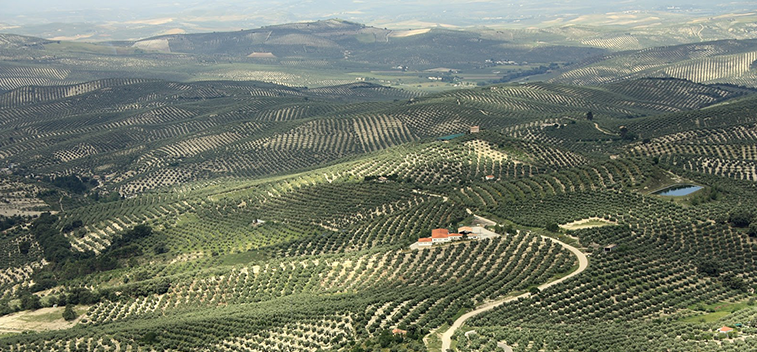
The holding of the Climate
Summit (COP25) in Madrid has served, among other things, to highlight the
commitment of Spanish society to a sustainable future. But also to claim the
role that the agricultural sector has as guardian of the environment. In this
sense, the olive grove is a magnificent example of how an entire sector works
to fight for a greener future.
In fact, the millenary
tree had a prominent place in the day "Climate change and biodiversity.
Towards a revolution of the food system", organized within the
framework of this summit by the Ministry for the Ecological Transition and the
Ethic magazine last December 5. At a table attended by Sofía Menéndez,
environmental and scientific journalist; Alberto Alfonso Pordomingo, co-founder
of Apadrinaunolivo.org; Tere
Adell, manager of the Mancomunidad Taula del Sénia; and José Eugenio Gutiérrez,
director of the Olivares Vivos project
of SEO/Birdlife, the importance of the olive tree in maintaining the landscape
and curbing erosion was underlined, as well as the value that the oil obtained
from it deserves.
Scientists have
established that this crop, far from contributing to climate change, helps to
remove an enormous amount of greenhouse gases, according to Aceites de
Oliva de España, the promotional brand of Interprofesional del Aceite de Oliva
Español.
Thus, the International Olive Oil Council
(IOC) revealed at the Marrakech Climate Summit that the life cycle of one
litre of olive oil, from the moment it is produced until it is consumed,
generates an average of 1.5 kilos of CO2. But at the same time, the
olive grove is able to fix up to 11.5 kilos of CO2 for each kilo of
oil produced, generating a positive fixation balance of 10 kilos of greenhouse
gases.
In addition, the IOC
also recalled that carbon sequestration results in the capacity of the land to
store water, thus helping to combat desertification that threatens large areas
of the Mediterranean. Even more so in Spain, which has more than 2.5 million
hectares of olive groves out of the 5.5 million hectares in the European Union.
The LIFE Living Olive
Trees project
On the other hand,
the olive grove is one of the richest ecosystems in Spain, as shown by the LIFE
Olivares Vivos project, an initiative coordinated by SEO/Birdlife with the
collaboration of Interprofesional del Aceite de Oliva Español, among other
institutions.
After evaluating the
biodiversity of a series of olive groves, 165 species of birds have been
catalogued, a quarter of those documented in the Peninsula. Something similar
occurs with invertebrates, with 58 species of ants and 119 pollinating insects.
Likewise, 549 herbaceous and 137 woody species have been located. Based on this
reality, this project is developing strategies that can be easily applied to
the entire Spanish olive grove to guarantee optimum biodiversity.
The value of the
olive grove as a unique landscape
According to the
Interprofesional, in addition to the socioeconomic value, the Spanish olive
grove provides a cultural and landscape value. Over almost three millennia, the
olive tree has colonized large areas of our country, creating the largest
humanized forest on the planet. A forest that in each area has taken on unique
forms: from the olive trees planted on the shores of the Mediterranean, to the
olive groves of Jaén and Córdoba, not forgetting the ancient tree forests of
the Málaga mountain ranges. A heritage that initiatives such as the Nomination
for World Heritage of the Olive Tree Landscapes in Andalusia are trying to put
in value throughout the world.
Source: Mercacei